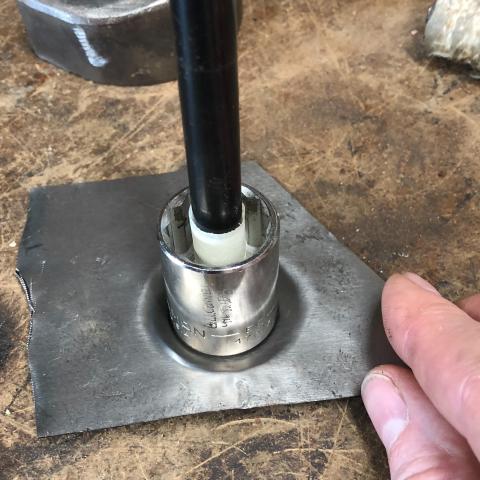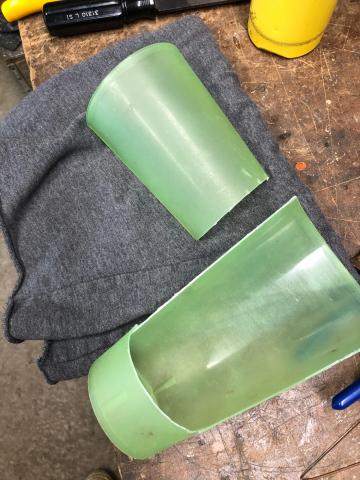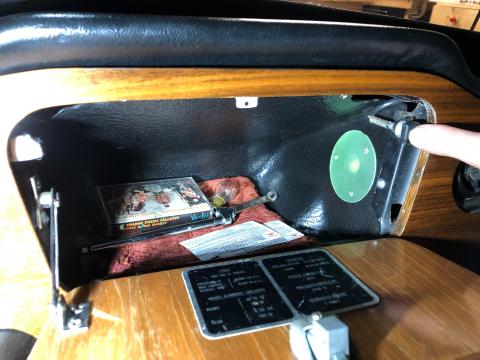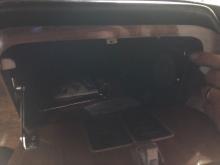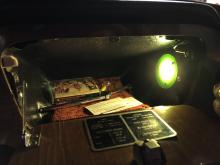Original TR6 glove boxes were made of pressed fiberboard, and like many mine was warped and crumbling. I replaced it last year with the modern ABS plastic version, and it's a good improvement in all ways but one: the new version doesn't include a mount for the interior light.
The original glove box had a pressed steel mount riveted on the side wall so the light socket could snap on. Stupidly, i forgot to save the light mount when i threw out my old glove box. I decided to just make my own, and upgrade to an LED light in the process.
I started with a scrap of sheet steel, about 20 gauge, and pressed it in the vise between two sockets.
I used a transfer punch with a little tape to more or less center inside the smaller socket. With the holes drilled, i started to look for something to use as a diffuser. Since i'm most often the driver and the light is on the right wall of the glove box, i don't want to blind myself whenever we open it. I found this plastic cup with a nice pattern on the surface.
It's also green, which is a nice match for the color of the gauge lights. I cut out a piece and used a bit of heat to flatten it. Actually, i wrecked a couple of pieces trying to make a bit of a dome shape (and melted it) before settling for a reasonably flat piece.
This is the 2 new pieces; the plastic diffuser lens and the zinc plated steel light mount.
Here's the new setup, riveted in place. It's a little larger than i imagined, but it does a great job of lighting up the whole glove box.
I already had some spare LED bulbs, and the materials were things i found around the shop, so it was a no-cost project that'll be really handy at night.


